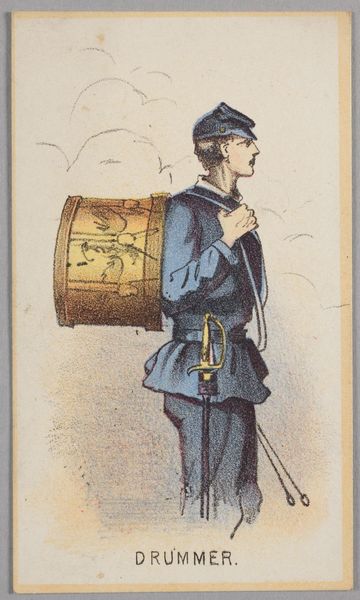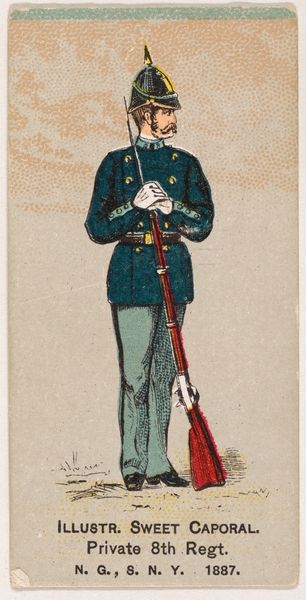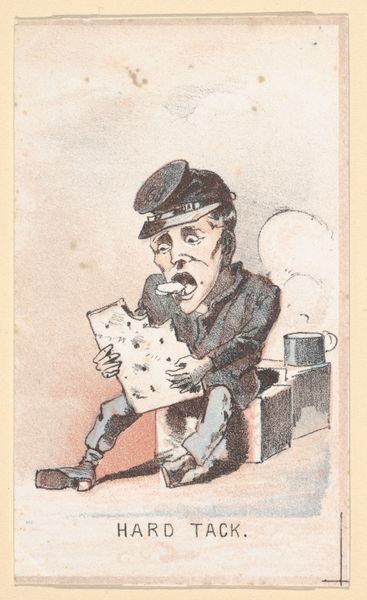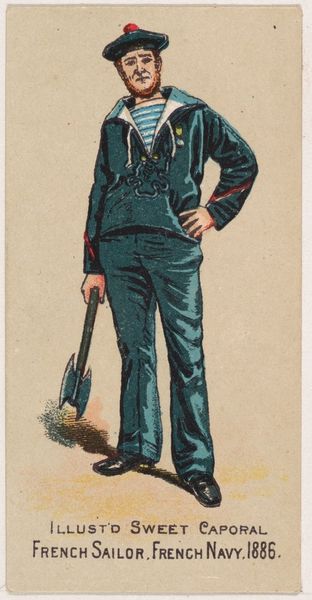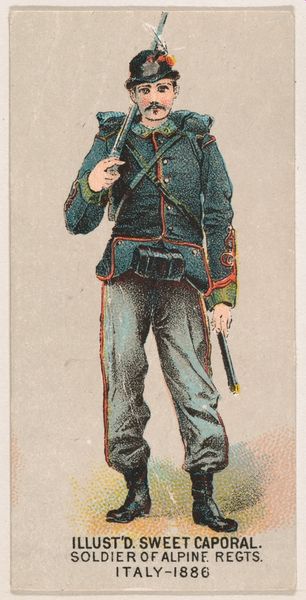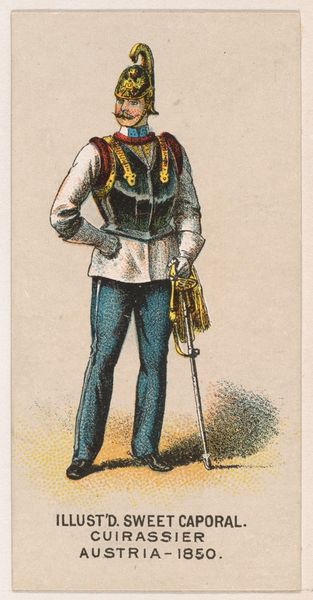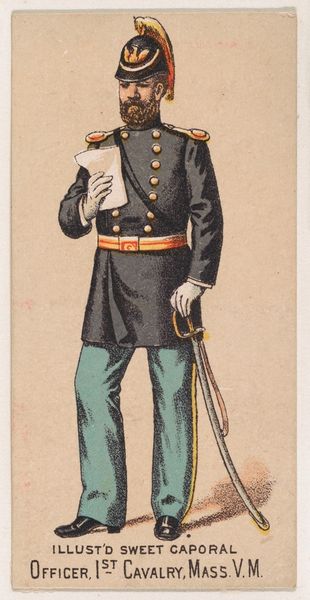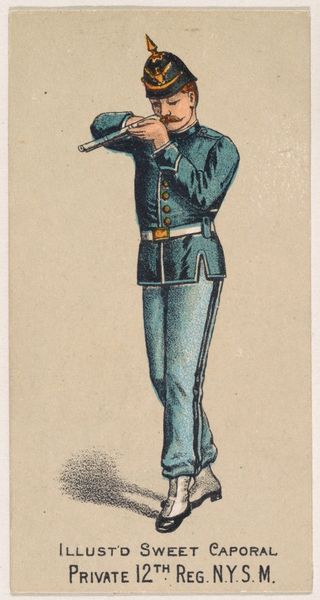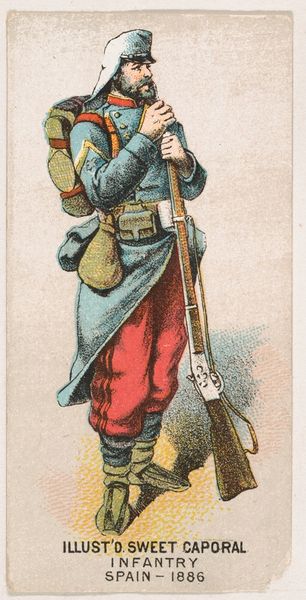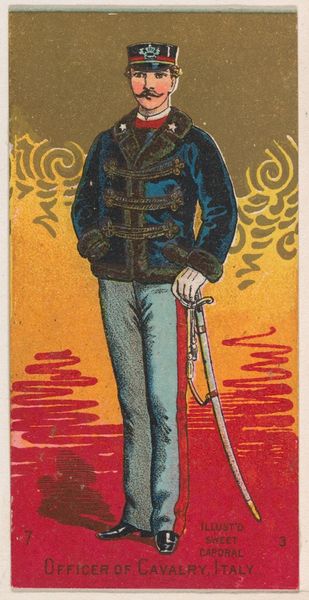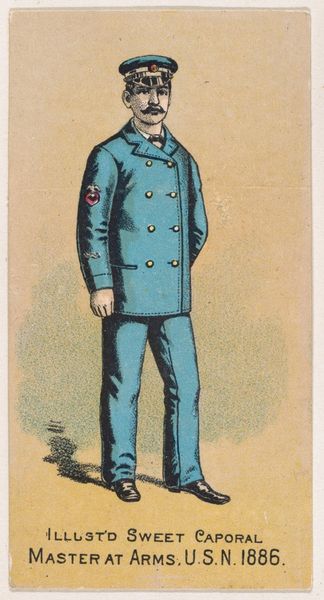
drawing, print
#
portrait
#
drawing
# print
#
soldier
#
men
Dimensions: Sheet: 4 1/8 x 2 3/8 in. (10.4 x 6.1 cm)
Copyright: Public Domain
Curator: Here we have Winslow Homer's "Life in Camp, Part 2: Drummer," created in 1864. What are your immediate impressions? Editor: Spare, certainly. The materials seem quite humble—I imagine this was mass-produced. I'm interested in the ways prints like this were made accessible to many people. The social impact must have been enormous. Curator: Indeed. What strikes me most is the youthful drummer as a symbol. What do you see reflected about youth and duty? It really evokes the complex role of young men thrust into the throes of the American Civil War. Editor: I’m drawn to the actual drum and its crafting, rather than its symbolism. Look at the details of its construction, it’s clearly not just a simple instrument. How would such an object be circulated among soldiers, repaired, and ultimately disposed of? That lifecycle interests me. Curator: It’s also curious how Homer portrays him; he’s not on the battlefield here but presented in profile against what appears to be a blank or perhaps clouded background. He seems isolated, burdened, maybe contemplative even. Do you find any symbolism within the costume itself, the clothing, and sword perhaps? Editor: The uniform is standard issue I believe. Mass production played a crucial role in equipping the Union Army. We are talking about massive amounts of standardized textile work here, the production of steel for the sword. What was the human cost? Curator: This makes me wonder what these widely circulated images contributed to both our collective memory and understanding of that conflict. Homer’s drummer becomes an enduring symbol of youth facing the harsh realities of war. Editor: Ultimately this simple drawing is quite potent. Looking at the context of industrialization and war gives us insight into how the conflict actually impacted the American experience. It is a complex material culture history worth delving into. Curator: It seems these quiet portrayals allow us to contemplate the broader, weightier meanings and legacies of the Civil War. Editor: Agreed. This has made me reflect upon the silent labor that underpins visible histories.
Comments
No comments
Be the first to comment and join the conversation on the ultimate creative platform.
